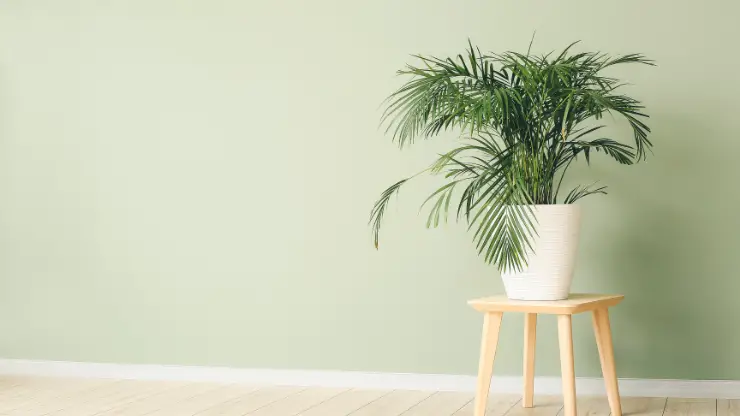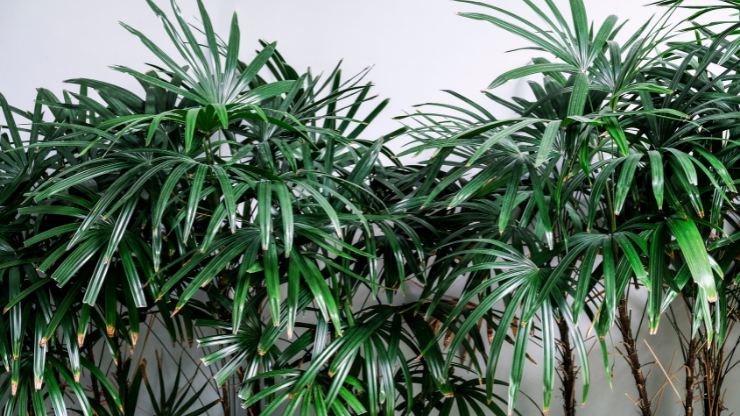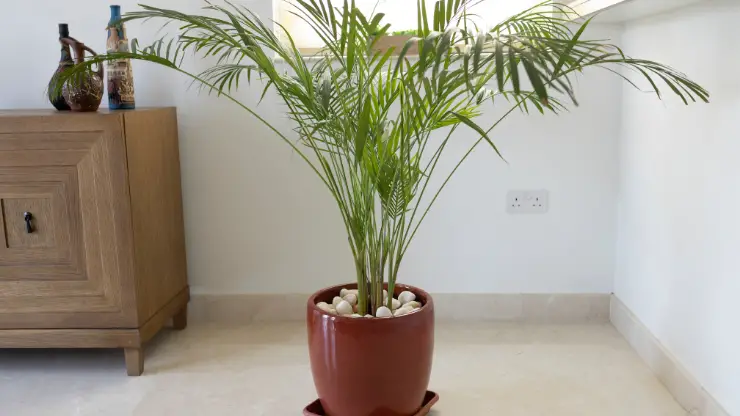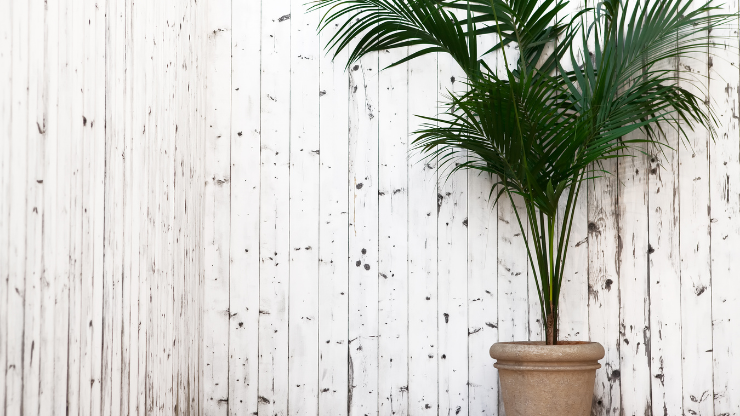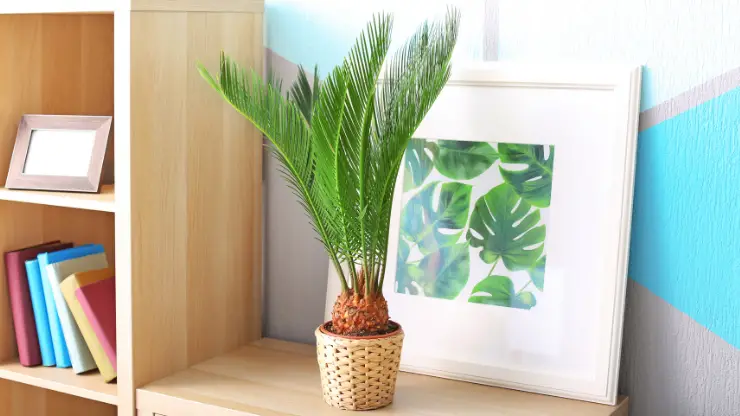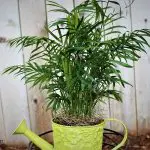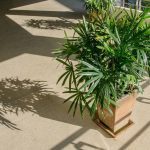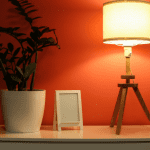I recently received an email from a reader inquiring about the best indoor palms for low light. This reader particularly asked about Lady Palm vs. Cat Palm – both of which perform well in lower light. But I recommended Lady Palm, as I’ve found it’s the most tolerant of dimmer areas.
However, there are several other palms that also tolerate and even thrive in low light. Let’s take a look at my favorite low-light palm trees for indoors.
Lady Palm
Lady Palm (Rhapis excelsa) is my first choice for someone who needs a low light palm. It’s adaptable, easy to grow, and doesn’t need as much light as other palms. Filtered light from an east-facing window is plenty for this elegant indoor tree.
In fact, too much light can cause the leaves to turn yellow. Avoid direct sun, keep temperatures warm (between 60 – 80 degrees F), feed monthly with half-strength fertilizer, and water when the top 1-inch of soil is dry to the touch.
Follow these guidelines and you’ll have a beautiful indoor palm for many years. See my complete Lady Palm care guide for more information on caring for this plant.
Parlor Palm
Parlor palm (Chamaedorea elegans) is my second choice for low light areas. It was once a favorite in dark Victorian parlors (hence the name), and it adapts beautifully to lower light conditions. For the best results, place near an east-facing window or in a room brightened with plenty of fluorescent light.
Exposure to sun can cause leaves to turn brown, so keep Parlor Palm away from areas that receive direct light. Keep temperatures warm and soil lightly moist at all times. Feed with an all-purpose houseplant fertilizer during spring and summer, and this palm will last for many years.
Bamboo Palm
Bamboo Palm (Chamaedorea seifrizii) is another of the best indoor palms for low light. Due to its tropical origins, this graceful palm thrives in low to moderate indirect light. It adapts to a variety of light conditions (as long as you keep it out of direct sunlight).
Keep soil moist, temperatures warm, and feed once a month during the summer to keep bamboo palm happy. It’s one of the easiest indoor palms to grow because it’s not picky about light, and it needs very little maintenance aside from regular watering.
Care for your bamboo palm well and it will live many years, reaching heights of up to 10 feet tall. It’s one of my personal favorite indoor palms for low light.
Kentia Palm
Kentia Palm (Howea forsteriana) prefers bright, indirect light, but it tolerates low light conditions just fine. A slow grower anyway, low light will slow growth even more. However, it won’t stop the plant from growing and it certainly won’t kill it.
You can place kentia palm in a north-facing window or a dimly lit corner and it will do well as long as its other needs are met. Keep soil moist, humidity high, and temperatures warm. Feed once a month during spring and summer.
I consider this palm to be moderately difficult to grow, and it’s certainly not my first choice for a low light palm. But it will work in a pinch. See my complete kentia palm care guide for more information on how to care for this plant.
Cat Palm
Cat Palm (Chamaedorea cataractarum), also known as the cataract palm, is a bushy palm with large, arching fronds. It’s a hardy, easy to grow indoor plant that doesn’t need a lot of fuss. It tolerates lower light conditions than many other palms (except perhaps those listed above).
Medium light is best for Cat Palm, so it’s farther down on the list. But I’m including it here because it can be grown in low light. I’ve even successfully grown a cat palm in a north-facing window with a few hours of supplemental fluorescent light.
Keep soil evenly moist, feed once a month during spring and summer, and keep it warm and out of direct sun. You’ll have a beautiful bushy indoor palm for years. Cat palm is great for softening corners, dividing rooms, or even defining entryways.
Sago Palm
And finally, we have the Sago Palm (Cycas revoluta). It can grow in full sunlight, but it’s also adaptable to lower light conditions. This would be my last choice for a low light indoor palm. If you can get any of the others on this list, I would choose them over Sago.
However, if you already have one and you’re considering placing it in a dimly lit area, you may still be successful. It just depends on how much light is available. Sago palm thrives in a bright east-, west-, or south-facing window. It won’t do well in the lowest light of a north-facing window. It may also suffer if placed too far away from a bright window.
Water when the soil feels dry to the touch, fertilize monthly spring through fall, and keep your Sago palm warm and moist. It’s not a difficult palm to care for, but it definitely needs a bit more light than the other low light palms on this list.
Best Indoor Palms for Low Light
In my experience, the best indoor palms for low light are lady palm, parlor palm, and bamboo palm (in that order). Next would be kentia palm, cat palm, and sago palm (in that order). These last three tolerate low light, but they might not thrive as well as the others.
I’ve seen many articles out there claiming that areca palm and even pygmy date palm can be grown in low light areas. I’m here to tell you that’s just not true. These palms need bright light conditions to thrive – not direct sun, but definitely not low light either.
Low light for growing houseplants is the light from a north-facing window or what a plant might receive when placed a few feet back from an east- or west-facing window. Light filtered through gauzy curtains or in a room lit with fluorescent lights can also be considered low light.
Need more plants to fill those dark corners? Check out my top picks for indoor trees that thrive in low light or the best houseplants for dark rooms.

